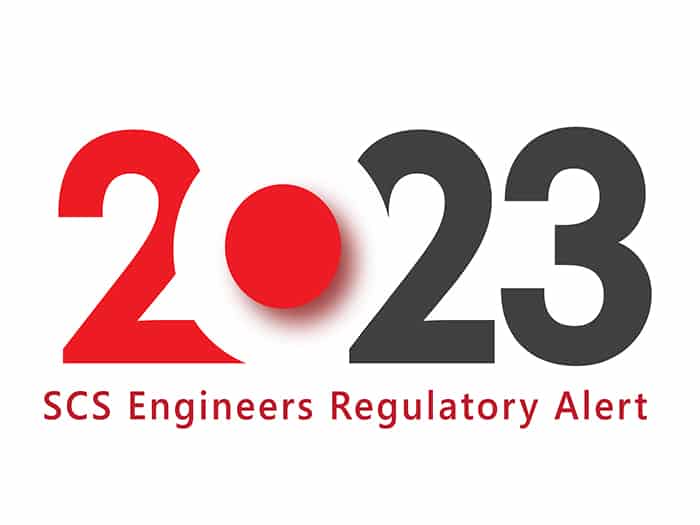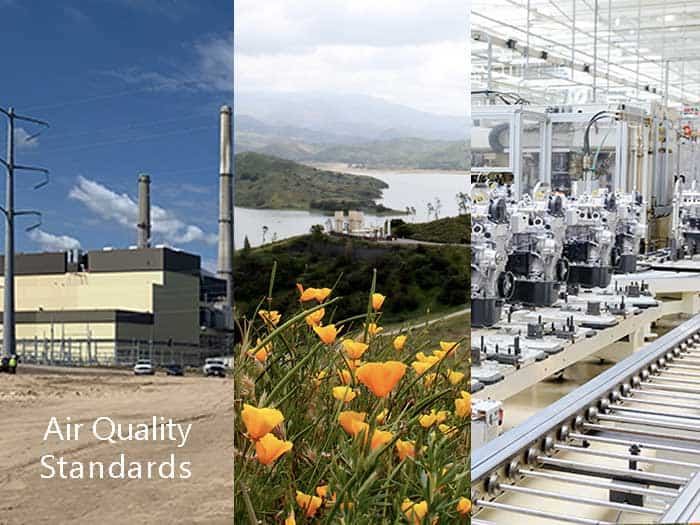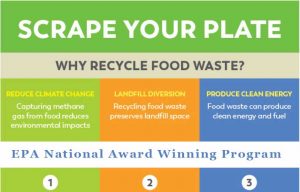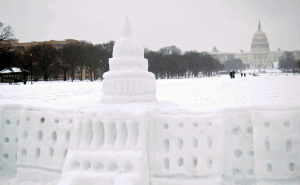


USEPA published its proposed revisions to Air Emissions Reporting Requirements (AERR) in August. AERR is a regulation that requires states, local agencies, and some tribes (SLTs) to report annual air emissions to EPA. The comment period has been extended until November, 17, 2023.
The current regulation allows voluntary reporting of air toxics emissions. EPA uses the data collected and other resources to create the National Emissions Inventory (NEI). NEI supports programs and activities such as Modeling (Air Quality Standards, Risk Analysis, etc.), Trends (Air Quality Trends Report), and Public Information.
AERR currently requires reporting of:
Proposed AERR revisions:
Proposed Phase-in of Stationary Point Source Reporting for owners and operators:
Comments due:
Please direct questions about your facility to your SCS project manager or .

The other night, I woke up in a bit of a panic and thought that I must have missed an announcement by the USEPA regarding the PM2.5 NAAQS reconsideration! Did I?
The answer, thankfully, is no! However, that is not any reason to relax and take no action.
By way of background, the Clean Air Act requires that the USEPA set National Ambient Air Quality Standards (NAAQS) for each of the criteria air pollutants, including particulate matter (PM). These NAAQS are based on the best available science and aim to protect human health and welfare. In June of 2021, the USEPA announced that they would reconsider the 2020 PM NAAQS final action under the prior administration that did not lower any standards. Then, in January 2023, the USEPA published the proposed rule to revise the PM2.5 primary annual standard down from 12 micrograms per cubic meter (µg/m3) to within a range of 9-10 µg/m3. In that proposal, the agency retained the 24-hour standard of 35 µg/m3.
The comment period for this proposed rule has since closed, and the agency is now working through over 5,000 submitted comments. It is unclear when the USEPA will issue the final rule (it could be any day now) and if the new annual standard will be set at 9 or 10 or something in between.
What does this mean for me as a regulated source? What should you do? SCS Engineers recommends the following actions:
Additional Resources:
About the Author: Rafe Christopherson, PE, is a project director and SCS’s industrial Clean Air Act leader. He is an air quality professional with a wide variety of experience over his 25-year career. His expertise includes consulting, working at an air quality regulatory agency and with industry. His expertise includes semiconductors, biofuels, pulp and paper, hardwoods, power generation, refineries, and general manufacturing. If you are interested in more information on this PM2.5 NAAQS reconsideration process and what it might mean for your business, you may reach Rafe at or via LinkedIn.
Los Angeles County Public Works – Environmental Programs Division is receiving a 2019 Food Recovery Challenge Award from the United States Environmental Protection Agency – USEPA this year. The national recognition is for the County’s substantial increase in food recovery and sustainable materials management. EPA’s data-driven awards are based on the information submitted in the Sustainable Materials Management – SMM, Data Management System, and reflect percent changes comparing an organization’s data to the previous year’s data.
LA County Public Works serves 88 cities and a population of more than 10 million people. The County is continually pursuing ways to make its communities more resilient by identifying new SMM actions to address greenhouse gases, waste generation, and pollution.
 The ‘Scrape Your Plate’ program encouraged the County’s Public Works employees to divert food waste from area landfills through organics recycling. Collecting food in the headquarters cafeteria and dining area, the program quickly expanded to include 20 on-campus breakrooms and special events at field facilities across the County.
The ‘Scrape Your Plate’ program encouraged the County’s Public Works employees to divert food waste from area landfills through organics recycling. Collecting food in the headquarters cafeteria and dining area, the program quickly expanded to include 20 on-campus breakrooms and special events at field facilities across the County.
Public Works, in collaboration with the Sanitation Districts, made use of the existing anaerobic digestion infrastructure to convert 13,700 pounds of food waste to electricity. Worm composting bins divert an additional 1,200 pounds of food waste and another 340 pounds were source reduced by improved planning by kitchen staff. All of these diversion tactics reduce greenhouse gas emissions.
Getting employees and visitors to separate food waste properly is always a challenge. The project team, including SCS Engineers, significantly reduced cross-contamination by increasing on-site signage and peer-to-peer outreach. Signage, easily updated with user-friendly graphics makes a difference. The team further encourages new social behaviors with an educational video.
Despite the closing of recycling programs in other cities due to the pandemic, LA County Public Works is now expanding its program to recycle other types of organic waste, including food-soiled paper.
Preventing and reducing food waste has a tremendous impact and positive benefits for our nation. Food is a valuable resource. Efforts to reduce food waste and ensure excess food doesn’t go to waste are needed now more than ever. Participants in EPA’s Food Recovery Challenge in 2019 prevented or diverted over 815,000 tons of food from entering landfills or incinerators, saving participants up to $42.3 million in avoided landfill tipping fees. The EPA provides many helpful tools on its website.
Learn more about SCS Engineers’ Sustainable Materials Management and Composting programs at SCSEngineers.com.
REPRINT FROM THE EPA PRESS RELEASE
EPA Finds That Financial Risks from Petroleum and Coal Products Manufacturing Industry Does Not Warrant Additional Federal Requirements
WASHINGTON (Dec. 4, 2019) — Today, the U.S. Environmental Protection Agency (EPA) is proposing to not impose burdensome and potentially duplicative financial responsibility requirements for the petroleum and coal products manufacturing industry (the industrial sector that transforms crude petroleum and coal into usable products) because the financial risk to the federal government from those facilities is already addressed by various existing federal and state technical and financial requirements and modern material management practices. EPA’s proposed action would not drop existing federal requirements, rather it is a proposal to not impose additional requirements.
“After a thorough evaluation, EPA has determined that the petroleum and coal manufacturing industry’s current practices, along with existing federal and state regulations, adequately address potential financial risks to the federal government and American taxpayer,” said EPA Administrator Andrew Wheeler. “As part of President Trump’s commitment to protecting our environment and growing our economy, we are committed to responsible regulation while not imposing additional and unnecessary requirements on key sectors of the economy when the current regulatory framework is working.”
In the 39 years since the Comprehensive Environmental Response, Compensation, and Liability Act (CERCLA) was enacted, a comprehensive regulatory framework has developed. Existing monitoring and operation standards have consistently worked over time to decrease the risk in this industry that if a hazardous waste cleanup is needed, the federal government will have to bear the cost of cleanup.
Further, this proposed finding does not affect, limit, or restrict EPA’s current authority to take a response action or enforcement action under CERCLA at any facility in this industry, to include requirements for financial responsibility as part of such response action, or to take appropriate action under various other federal environmental statutes that may apply to individual facilities, such as the Clean Air Act, Clean Water Act, Resource Conservation and Recovery Act, and Toxic Substances Control Act. These existing regulations, including financial responsibility requirements, continue to apply to facilities in this industry.
This proposal is consistent with the analysis EPA undertook in developing its final action for the hard rock mining industry. In that case, EPA’s approach was unanimously upheld by the D.C. Circuit Court of Appeals in July 2019. EPA has evaluated the degree and duration of risk of the possible cost to cover the cleanup of hazardous substance releases associated with the production, transportation, treatment, storage, or disposal of hazardous substances in the petroleum and coal products manufacturing industry. EPA also examined the industry’s economic trends and the financial health of the sector and found the industry to be in a relatively stable financial position with low default risk. EPA’s evaluation showed that existing regulatory programs and voluntary practices reduce the need for federally financed response action at facilities in this industry.
Background
Section 108(b) of CERCLA, also known as Superfund, directs EPA to develop regulations requiring classes of facilities to establish and maintain evidence of financial responsibility to cover the costs associated with releases or threatened releases of hazardous substances from their facilities.
In December 2016, EPA described its plan to consider financial requirements under CERCLA for the electric power industry, the petroleum and coal products manufacturing industry, and the chemical manufacturing industry. On July 2, 2019, EPA proposed to not issue financial responsibility requirements for the electric power industry. EPA is currently working on a proposal for the chemical manufacturing industry.
Today’s proposal for the petroleum and coal industry will be published in the Federal Register, and EPA invites stakeholders and the public to provide comments during the 60-day public comment period.
For more information, visit: https://www.epa.gov/superfund/superfund-financial-responsibility, or contact SCS Engineers at for help.
Proposed Amendments to the Coal Ash Regulations, Public Hearing Registration Open
EPA is proposing further amendments to the regulations governing the disposal of coal combustion residuals, commonly known as coal ash.
The proposal addresses two issues remanded by the courts back to EPA for action. EPA is proposing a modification to one of the criteria used to determine if coal ash is being beneficially used or would be considered disposal. The second proposed change is to the requirements for managing piles of coal ash. Other proposed changes include revisions to enhance public access to information.
In addition to accepting written comments on this proposal, EPA is holding two public hearings – one in person in Arlington, Virginia on October 2, 2019, and a second one that will be held virtually.
To learn more about this proposal and the public hearings, learn how to comment and register to speak or observe, visit: https://www.epa.gov/coalash/coal-ash-rule#July2019proposal.
Upcoming e-Manifest Fiscal Years 2020-2021 User Fees
EPA announced the new e-Manifest user fees for fiscal years 2020-2021 (October 1, 2019-September 30, 2021). These user fees are set based on the manifest usage and processing costs for each manifest type.
EPA encourages the hazardous waste industry to adopt fully-electronic manifesting as soon as possible so that industry members can take maximum advantage of the benefits and cost savings of electronic manifesting. However, EPA acknowledges that it will take time for industries and receiving facilities to fully transition to electronic manifests. EPA supports the wide adoption of electronic manifesting by the regulated community as soon as it is feasible.
For more information and to view the new user fees, visit https://www.epa.gov/e-manifest/e-manifest-user-fees-and-payment-information#2020fees.
Comment Period Open for Comprehensive Environmental Response, Compensation, and Liability Act (CERCLA) 108(b) Electric Power Industry Proposal
EPA is seeking public comment on a proposed rule not imposing financial responsibility requirements under CERCLA Section 108(b) for Electric Power Generation, Transportation, and Distribution facilities.
The comment period for the proposed changes is open for 60 days, through September 27, 2019. To learn more, view the proposal, and how to submit comments visit: https://www.epa.gov/superfund/proposed-action-financial-responsibility-requirements-under-cercla-section-108b-classes.
Incremental Sampling Methodology (ISM) at PCB Cleanup Sites
ISM has been shown to be a valid and effective method for determining the concentrations of contaminants, including PCBs, in heterogeneous soils when designed appropriately. This document has a brief description of ISM and provides EPA’s policy of reviewing and approving site-specific applications to use ISM at PCB cleanup sites: https://www.epa.gov/pcbs/incremental-sampling-methodology-ism-pcb-cleanup-sites.
New and Updated Pharmaceutical Frequent Questions Posted
EPA recently updated several frequent questions about the final rule establishing management standards for hazardous waste pharmaceuticals and amending the P075 listing for nicotine. Additionally, EPA added a section about the sewer ban, which was effective August 21, 2019.
Check out the frequent questions out here: https://www.epa.gov/hwgenerators/frequent-questions-about-management-standards-hazardous-waste-pharmaceuticals-and.
Use these EPA resources to learn more, or contact SCS at and we’ll help answer your questions.
In a letter dated December 18, 2018, Patricia Overmeyer, Deputy Director, Office of Brownfields and Land Revitalization at the USEPA encouraged the IRS to clarify the proposed opportunity zone regulations (REG-115420-18). She reminded the IRS that investments in the assessment, remediation, and redevelopment of brownfields properties in qualified opportunity zones (QOZ) are included within the scope of qualified opportunity funds (QOF).
Her goal is to give Opportunity Fund investors confidence that QOF investments can be used to assess, remediate, and redevelop brownfields properties located in QOZs. Subsequently, these clarifications may lead to the economic revitalization of many of our nation’s disadvantaged communities.
The public comment period for these regulations expired on December 28, 2018. The public hearing was held on February 14, 2019; participants requested additional guidance on a wide variety of proposed regulations, with many suggesting improvements to the regulations allowing for more flexibility in regards to business investment.
FULL TEXT
December 18, 2018
Kirsten B. Wielobob
Deputy Commissioner for Services and Enforcement
CC:PA:LPD:PR (REG-115420-18), Room 5203
Internal Revenue Service
PO Box 7604
Ben Franklin Station
Washington, DC 20044
Subject: U.S. EPA Office of Brownfields and Land Revitalization Seeks Regulatory Clarifications and Improvements to Proposed IRS Rule Regarding “Investing in Opportunity Funds,” REG-115420-18
Dear Ms. Wielobob:
On behalf of the U.S. Environmental Protection Agency’s (EPA) Office of Brownfields and Land Revitalization (OBLR), thank you for the opportunity to comment on the Department of Treasury’s Proposed Regulations §1400Z-2(a)-1, 2(c)-1, 2(d)-1, 2(e)-1 and Revenue Ruling 2018-29, regarding “Investing in Opportunity Funds.” EPA’s OBLR encourages the IRS to clarify and improve the proposed rule to better foster investment in blighted and contaminated properties, or “brownfield sites,” in designated Opportunity Zones.
The “Investing in Opportunity Act” has the potential to spur investment in communities where neighborhoods have long been plagued by concentrated distress and those left behind by the economic recovery following the Recession. Many of these communities struggle with stagnation and lack of access to capital, in part due to the challenges of remediating and redeveloping their brownfield sites. A brownfield is a property where the presence or potential presence of a hazardous substance, pollutant, or contaminant from the property’s former use complicates or inhibits the property’s expansion, redevelopment, or productive reuse. Brownfield sites often stigmatize neighborhoods and perpetuate blight and socio-economic distress.
EPA’s OBLR encourages the IRS to clarify in the final guidance that investments in the assessment, remediation, and redevelopment of brownfields properties located in Qualified Opportunity Zones (QOZs) are included within the scope of Qualified Opportunity Funds (QOFs). This clarification will provide an incentive to invest funds in the assessment, remediation, and reuse of brownfield properties. Assessing, remediating and redeveloping brownfield sites in QOZs is integral to the primary purpose of the Investing in Opportunity Act provisions1 because:
Clarification Requests and Comments:
EPA’s OBLR requests that the IRS make the following clarifications to the proposed guidelines. These clarifications will give Opportunity Fund investors confidence that QOF investment can be used to assess, clean up, and redevelop brownfields properties located in QOZs.
EPA’s OBLR requests that the IRS clarify the definition of “Original Use” so that the term applies to property that is a brownfield site as defined by section 101(39) of the Comprehensive Environmental Response, Compensation, and Liability Act of 1980 (42 U.S.C. 9601), which is the law that establishes the U.S. EPA brownfields program and guides brownfields considerations by many other federal departments and agencies. The IRS has used this definition of “brownfield” as well, under 26 U.S.C. Section 198(c), which permitted certain treatment of expenditures on “qualified environmental remediation” at a “qualified remediation site”, which was defined as “any area . . . at or on which there has been a release (or threat of release) or disposal of any hazardous substance.”
While most new investments assume that a property already meets applicable health and safety standards, brownfields properties are different in that they are complicated by the presence or potential presence of a hazardous substance, pollutant, or contaminant.
Defining “Original Use” to incorporate brownfields properties located in QOZs creates the best solution to enabling QOF investments in brownfields remediation and redevelopment. This clarification will address the concern that the 30-month window for substantial improvement is unrealistic for brownfields properties, which take longer than traditional vertical development projects due to the added challenges of contamination.
Example: A brownfields remediation firm purchases a contaminated brownfields property in a QOZ, where a former factory was once located, to remediate the land and sell the property for new use. This brownfield property should qualify as QOZ property under “original use.
“Underutilized” could be defined as it is in other federal statute, such as the definition of “underutilized” in 45 CFR 12a.1 (which defines underutilized as it relates to property owned by federal agencies), stating that ” underutilized” should mean an entire property or portion thereof, with or without improvements which is used only at irregular periods or intermittently by the owner or operator for purposes of that owner or operator, or which is used for current purposes that can be satisfied with only a portion of the property.
The definition of original use should also permit QOZ investment in properties that contribute to blight or create barriers to economic vibrancy due to prolonged vacancy or underutilization. Defining original use to include new use of properties that are contributing to decay within distressed communities is clearly in line with the purpose of the incentive
Example: A developer purchases a property to rehabilitate for new use. The property has a factory on it that has been vacant for more than one year. Regardless of whether that property is reused for a similar manufacturing purpose, a new manufacturing purpose, or a different kind of development (such as commercial or residential), this property should qualify as QOZ Property under “original use.” The same should apply for a property that has a 5-acre factory on it where only 0.5 acres of space are currently in use.
Local units of government often acquire brownfields and other blighted properties through tax delinquency, abandonment, bankruptcy, etc. A bright line test around the status of ownership for properties in foreclosure, receivership, or involuntary transfer may be easier to determine than the historical use of the property and expedite investment in assembled properties, particularly in distressed urban areas.
Without this clarification, it is unclear how improvements to the land itself factor into a calculation of substantial improvement, given that the adjusted basis in the example outlined in Rev. Rule 2018-29 pertains only to improvements to a building. While Rev. Rule 20 18-29 indicates that the cost of the land on which the building is located is not included in the adjusted basis for the substantial improvement calculation, it is unclear what the calculation would be on a brownfields project for which the primary or sole improvements are improvements to the land itself, when vertical development expected later.
Environmental assessment and remediation activities can make a property ready for redevelopment where it would otherwise be unsafe for reuse due to the presence or potential presence of environmental contamination. Unless the land is assessed, remediated to appropriate contaminant levels and exposures controlled (based on reuse of the property), any building and business investment will not occur on the property.
The following environmental assessment and remediation activities commonly occur at brownfield properties because they are necessary to enable safe reuse:
Example: A developer purchases Property X, which is located in a QOZ, for $1 million. Property X consists of a building previously used as a factory erected prior to 20 18 and land on which the factory building is located. Sixty percent ($600k) of the $1 million purchase price for Property X is attributable to the value of the land and forty percent ($400k) is attributable to the value of the building. QOF A intends to convert the factory building to residential rental property. The transformation will require $800k in environmental remediation costs. Within 29 months after the date of QOF A’s acquisition of Property X, QOF A invests $800k in remediating the property and $500k in additions to the building. Clarification is necessary to ensure that the expenses associated with remediating the land will count toward the substantial improvement calculation. The same is true for a similar scenario common at complex brownfield sites in which at the close of the 30-month period the only expenditures have been for remediation of the land.
Clarification on this issue is particularly pertinent to facilitating the ability for QOZ Businesses to remediate brownfields properties with QOF funds to sell to a vertical developer and still access the benefits of the step-up in basis. Without this clarification, using QOF funding for brownfields remediation and property improvement as the primary business activity might require the owners of the site to sit on the site for the duration of the ten years after remediation is complete in order to access the benefits of the Opportunity Zone incentive.
Example: On January 1, 2019, T, a calendar-year taxpayer, invested $1 million of gain in B, an QOF partnership dedicated to brownfields cleanup that remediates properties to sell for future vertical development by other parties. B immediately makes a $1 million investment in remediation and land improvements to a brownfields site that qualifies as QOZ Property. On January 1, 2023 (after four years), B sells the remediated QOZ Property to a vertical developer for $1.5 million and reinvests all of the proceeds in replacement QOZ Property within 12 months. Clarification is necessary that if the entire $1.5 million from the sale of QOZ Property is reinvested into replacement QOZ Property: 1) the deferral and reduction in basis timeclocks on the original $1 million investment would not reset, and 2) the 10-year timeclock on would not reset for the $500,000 in gain.
Brownfields remediation and redevelopment often includes separate land improvement (horizontal development) and vertical development phases, and investors face regulatory risk of effectuating cleanup which enables the property to be financed. These factors make the substantial improvement 30-month window extremely difficult time frame in which to complete a redevelopment which involves remediation of environmental contamination.
Large redevelopment projects such as auto manufacturing site or former hospitals may require extensive demolition of existing buildings, excavation, cleanup and grading as early site preparations for the construction of the new structure. It is common to spend several years on existing structural demolition, earthmoving, and environmental cleanup on large sites, which almost guarantees that the finished building will not be completely operational by the end of the 30-month period for substantial improvement. Many “ground up” construction projects in cold weather climates will also face greater challenges in achieving occupancy within 30 months and will likely be a work in progress. Clarity is needed so that significant — and transformative — redevelopment projects can be pursued.
Thank you for considering our requests for clarifications. The clarifications we are requesting will give Opportunity Fund investors confidence that QOF investments can be used to assess, remediate, and redevelop brownfields properties located in QOZs. Subsequently, these clarifications may lead to the economic revitalization of many of our nation’s disadvantaged communities. Should you want to discuss our comments and requests for clarification, please feel free to contact me at 202-566-2774 or .
Sincerely,
Patricia Overmeyer
Deputy Director
Office of Brownfields and Land Revitalization
U.S. Environmental Protection Agency
1See H.R. Rept. 115-466, 537, which describes the intent to attract an influx of capital to designated low-income communities with impacts and outcomes in those areas including job creation, poverty reduction, and other metrics.
Learn More:
As a national environmental consulting and contracting firm specializing in managing hazardous substances, SCS Engineers is helping our clients now. Start by reading The Environmental Dangers of PFAS and Technologies for Removing Them, published in WasteAdvantage magazine for use in the solid waste industry and other industrial applications in support of EPA’s Action Plan.
On February 14, 2019, the U.S. Environmental Protection Agency (EPA) Acting Administrator Andrew Wheeler announced EPA’s Per- and Polyfluoroalkyl Substances (PFAS) Action Plan. The PFAS Action Plan is in response to public interest and input the EPA has received over the past year. EPA’s Action Plan identifies both short-term solutions for addressing these chemicals and long-term strategies for states, tribes, and local communities need to provide clean and safe drinking water to their residents and to address PFAS at the source. These actions include:
Contact a local SCS professional at or visit our website.
$50 million+ will be made available this year.
With the passage of the BUILD Act this year, there are important changes to the grant applications including special consideration given to communities and projects on any waterfronts or floodplains. There are three categories of opportunities for Brownfield grant funding, as follows:
Multipurpose Grants – each proposal is funded up to $800,000 over five years. EPA anticipates selecting ten proposals.
Assessment Grants – Community-wide and Site-specific proposals are each funded up to $200,000 over three years; Assessment Coalition proposals are funded up to $600,000 over three years. EPA anticipates selecting 114 proposals.
Cleanup Grants each proposal funded up to $500,000 over three years. EPA anticipates selecting 40 proposals. Brownfield sites where EPA Cleanup Grant funds were previously expended may not receive additional EPA Cleanup Grant funding in FY 2019.
EPA is hosting a webinar on December 11, 2018, at 2 pm (ET). The webinar is to assist applicants with understanding the Multipurpose, Assessment, and Cleanup Grant Guidelines. Participants can join the audio conference line at 1-866-299-3188 using access code: 202-566-1817, and the web conference at
SCS Engineers routinely and successfully supports our clients with Brownfield’s grant writing and grant application reviews, in addition to our Brownfields and Remediation Services.
Applications are due by January 31, 2019. Please contact Amy Dzialowski, our Brownfields Grant Specialist or if you have a property or redevelopment district that you think is a good fit for pursuing these funds, or for a conversation regarding this program.

Amy Dzialowski, Project Director, and SCS’s Brownfields Grants National Expert
Brownfields and Voluntary Remediation Experts: Mike McLaughlin, Sr. VP, and Dan Johnson, VP.
In a Motion filed on November 7, the U.S. Environmental Protection Agency (USEPA) requested remand of five provisions of the Coal Combustion Residuals (CCR) Rule (40 CFR Parts 257 and 261), which would allow the agency to reconsider the provisions. This SCS Engineers Technical Bulletin covers the five provisions and the basis for their reconsideration. Read the full text here.
Oral arguments on EPA’s motion took place on November 20, 2017. EPA had asked that oral arguments be postponed, and all other aspects of the litigation are suspended until it could rule, but the court did not agree. The current provisions in this Technical Bulletin remain in place unless and until USEPA revises or rescinds them in a future rulemaking.
SCS Engineers will continue to track these issues and keep you informed. Join our Technical Bulletin email list by clicking here, or follow SCS on LinkedIn, Facebook, or Twitter .

SCS Engineers along with Waste Management, Republic Services, Advanced Disposal, National Waste & Recycling Association, Solid Waste Association of North America, The Sanitation Districts of the County of Los Angeles, and other consultants have submitted additional comments to the U.S. Environmental Protection Agency (USEPA), Fuels & Incineration Group, Sector Policies and Programs Division regarding the Supplemental Proposal for the New Standards of Performance (NSPS) for Municipal Solid Waste (MSW) Landfills and the Proposed Emission Guidelines (EG).
The USEPA solicits comments from industry, state officials and other organizations to clarify key points in proposed policy prior to enacting the policy. Although the Agency is not required to consider additional comments after the closing period for such comments, these solid waste industry participants wanted to provide additional findings supporting portions of the policies and guidelines and asking for clarification in areas where there appears to be inconsistency with other federal rules or a lack of data.
The eighteen-page letter was submitted on January 22, 2016, to Ms. Hillary Ward. Since last Friday inclement weather has forced a closing of Federal Agencies in the Washington, D.C. region.
Click for SCS Engineers compliance information.
Click to contact Pat Sullivan, SCS National Expert on EPA Landfill Clean Air Act; NSPS/EG